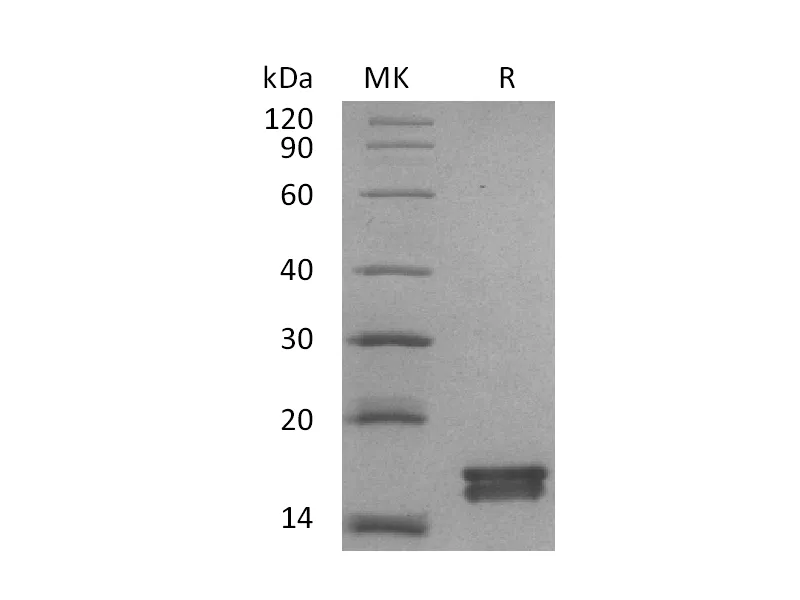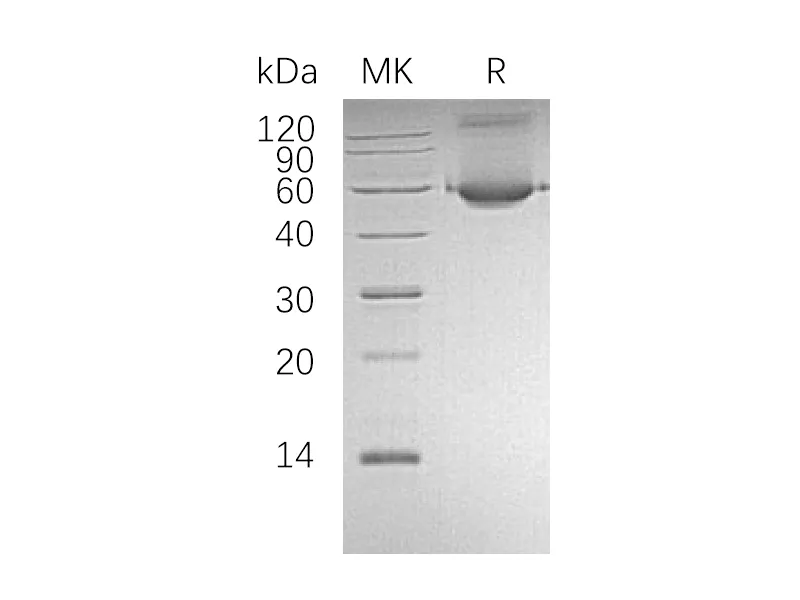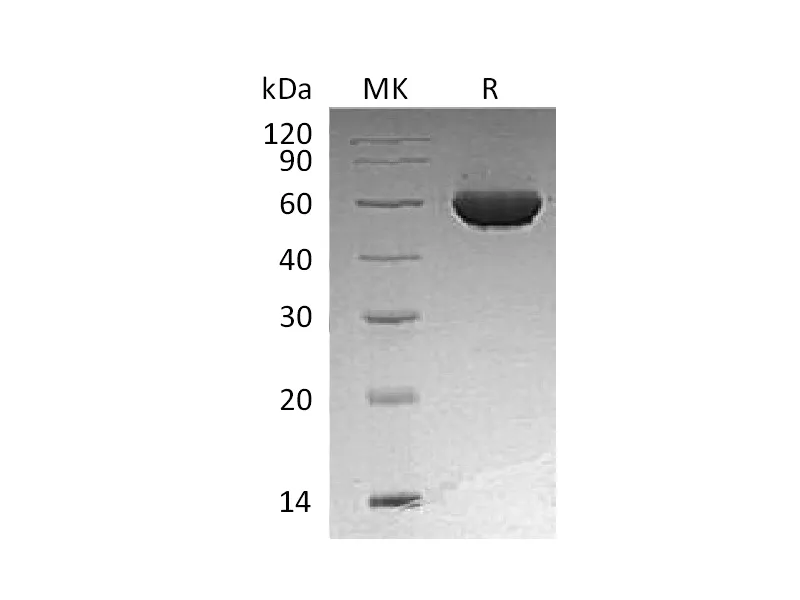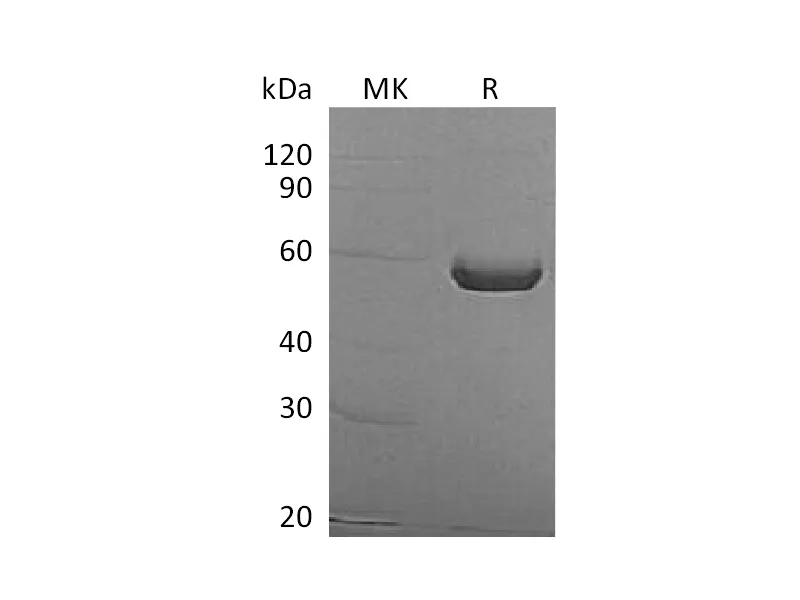Alternative Names
Interleukin-12 subunit beta; IL-12B; Cytotoxic lymphocyte maturation factor 40 kDa subunit; CLMF p40; IL-12 subunit p40; Il12b
Background
Interleukin-12 subunit beta (IL-12B) belongs to the type I cytokine receptor family. It contains 1 fibronectin type-III domain and 1 Ig-like C2-type domain. IL-12B is a cytokine that acts on T and natural killer cells, and has a broad array of biological activities. IL-12 is a disulfide-linked heterodimer composed of the 40 kD cytokine receptor encoded by IL12B and a 35 kD subunit encoded by IL12A. IL12 is expressed by activated macrophages that serve as an essential inducer of Th1 cells development. It has been found to be important for sustaining a sufficient number of memory/effector Th1 cells to mediate long-term protection to an intracellular pathogen.
Note
For Research Use Only , Not for Diagnostic Use.




